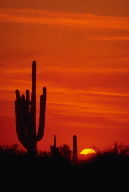|
All matter is made up of one or more elements. An element is a substance which cannot be broken down into a simpler substance.
As element is made up of huge numbers of atoms. An atom is the smallest portion of an element that still retains the properties of the element. Atoms contain three major types of subatomic particles called protons, neutrons and electrons. Protons and electrons are electrically charged. The positively (+) charged protons and the negatively (-) charged electrons are attracted to each other by their opposite charges. Neutrons are neutral, and have no electrical charge. The center or nucleus of an atom is made up of protons and neutrons. Electrons, attracted to the positively charged nucleus, orbit around it. If you could isolate a single atom, it would have the same number of protons and electrons, therefore it would be electrically neutral. But atoms bump into each other all the time, getting some of their electrons knocked out of orbit, or stealing them from each other. When this happens, the atom no longer has equal numbers of protons and electrons; it is then positively or negatively charged. In this state the atom is called an ion. A cation (+) is a positively charged ion, and an anion (-) is a negatively charged ion.
Most chemical interactions occur between ions; their positive or negative charges determine their behavior in the soil system. An ion might be a single element such as Calcium (Ca2+), or a molecule such as Nitrate (NO3). The superscript indicates the ion’s oxidation state, and shows how may electrons it must give up, (if it is a cation), or accept, (if it is an anion), to form a stable compound with a neutral charge. Some elements, like Iron (Fe) might be present in different oxidation states: Fe2+ or Fe3+.
|


